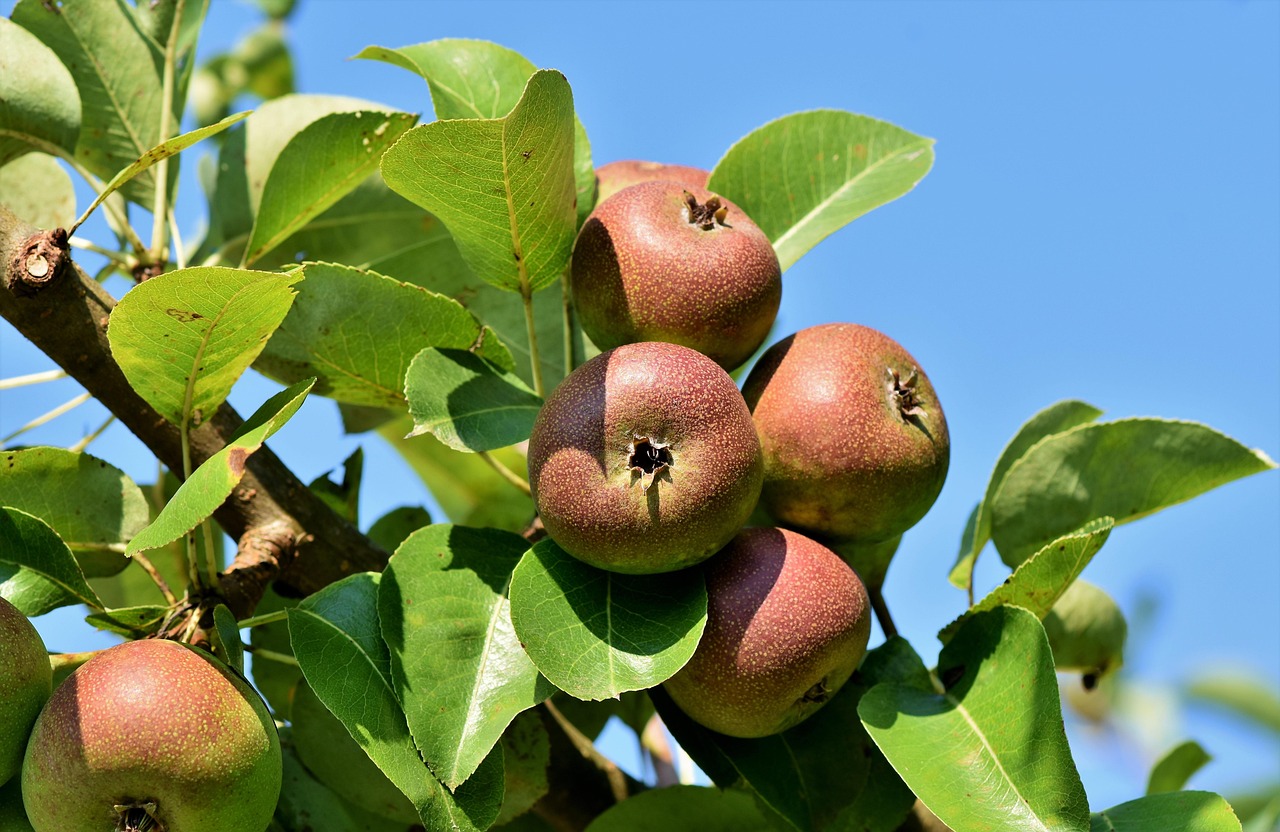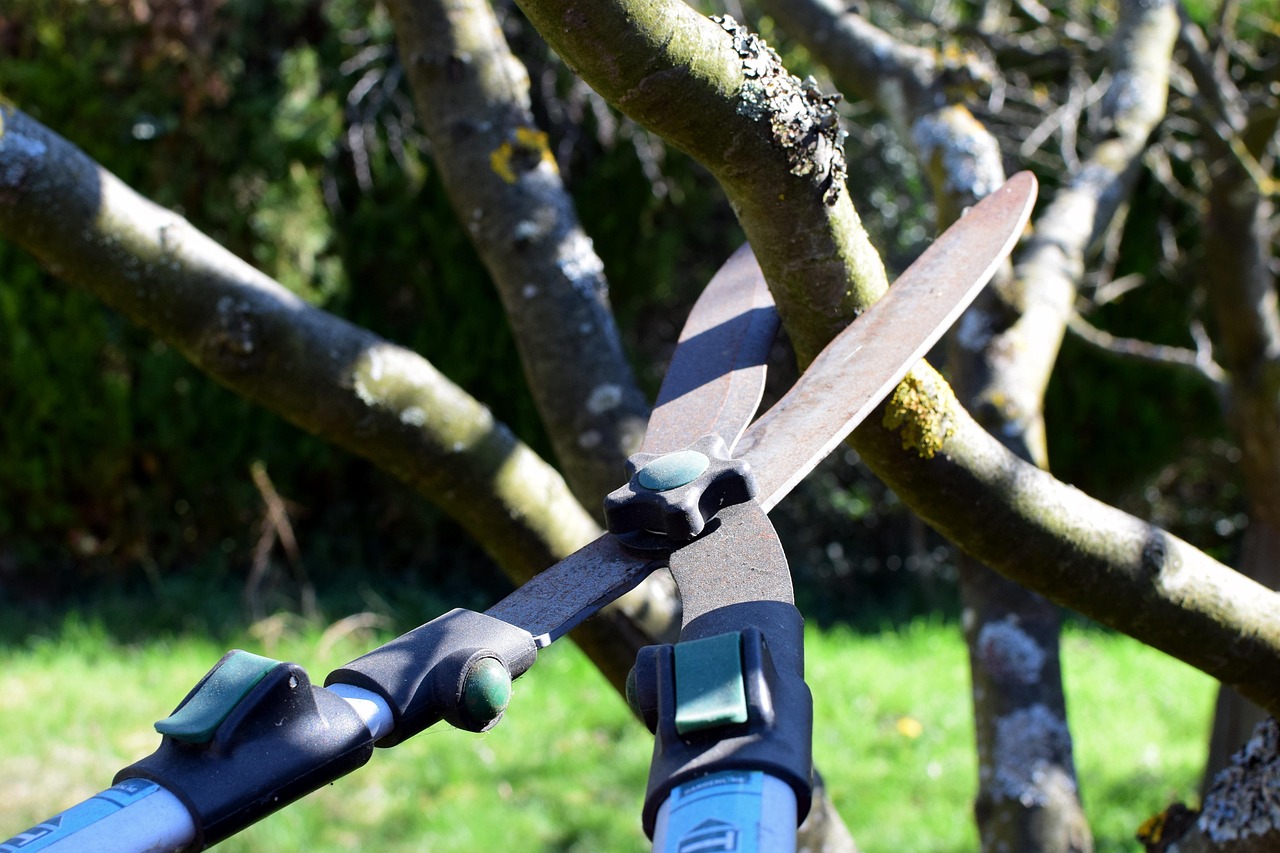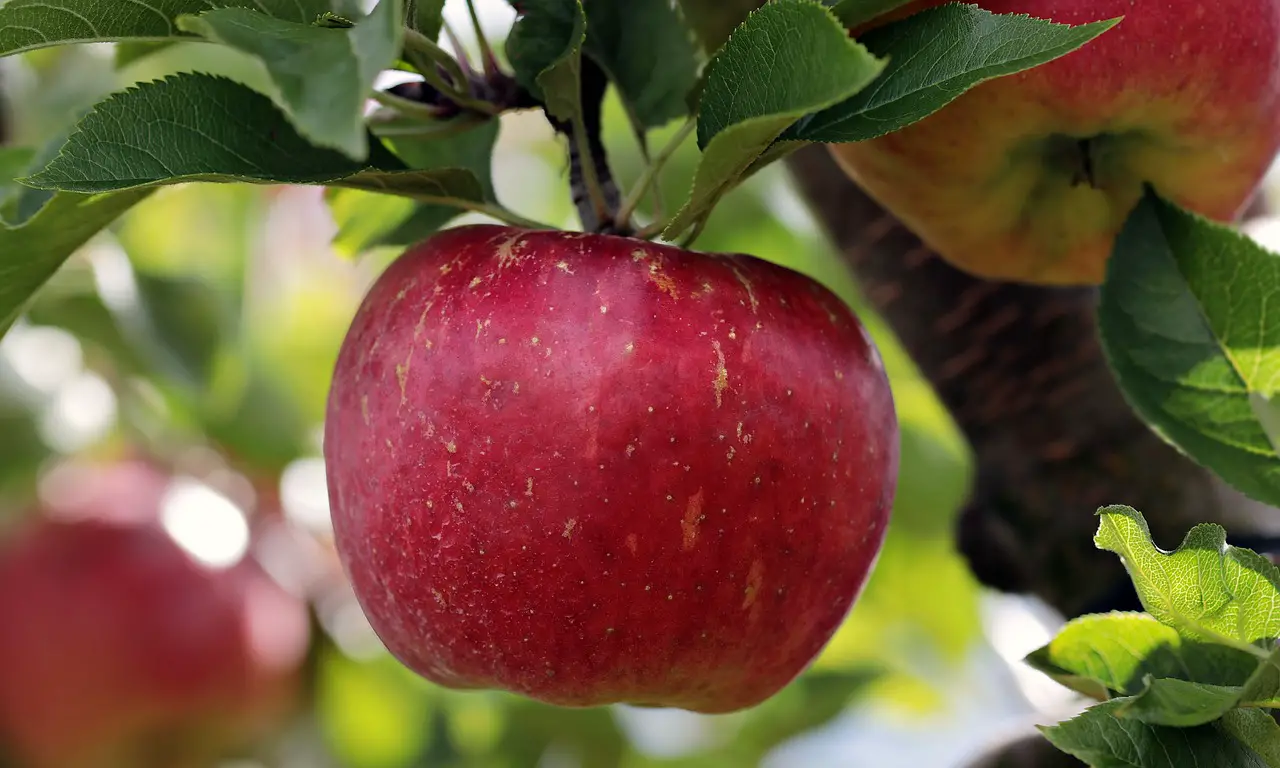To ensure healthier growth of apple trees, avoid common pruning mistakes. These include cutting during the wrong season, removing too much foliage, neglecting tree structure, and using dull tools. Understanding proper techniques can significantly enhance the vitality and productivity of your apple trees.
Pruning apple trees is a vital practice for maintaining their health and productivity. When done correctly, pruning helps improve air circulation, sunlight penetration, and overall tree structure. This, in turn, leads to better fruit production and a more robust tree. However, many gardeners make mistakes that can hinder their trees’ growth. Understanding what to avoid is essential for anyone looking to cultivate healthy apple trees.

Apple trees can thrive for decades with the right care. However, improper pruning can lead to various problems, including disease susceptibility and reduced fruit yield. It is essential to familiarize yourself with the do’s and don’ts of apple tree pruning. Below are some key facts that highlight the importance of proper pruning:
| Aspect | Impact of Proper Pruning | Impact of Improper Pruning |
|---|---|---|
| Air Circulation | Improved airflow reduces disease risk | Increased humidity encourages fungal growth |
| Sunlight Penetration | Enhanced fruit ripening and quality | Poor fruit development and lower yields |
| Tree Structure | Stronger branches support larger fruit | Weak branches may break under weight |
| Overall Health | Longer lifespan and resilience against pests | Increased susceptibility to diseases |
Common Pruning Mistakes to Avoid
Understanding common pruning mistakes can help ensure that your apple trees thrive. Here are several mistakes to watch out for:
Pruning at the Wrong Time
Timing is crucial when it comes to pruning apple trees. The best time to prune is during the late winter or early spring before new growth begins. Pruning too early can expose the tree to frost damage, while pruning too late might remove buds that will develop into fruit.

Removing Too Much Foliage
Over-pruning can lead to stress for the tree. It is essential to maintain a balance between removing enough foliage to promote sunlight access and keeping enough leaves for photosynthesis. A good rule of thumb is to remove no more than 20-30% of the tree’s total canopy in a single season.
Ineffective Tool Use
The tools you use for pruning can significantly affect the health of your apple trees. Dull or dirty tools can cause jagged cuts that are more susceptible to disease. Always ensure your tools are sharp and sanitized before use. This practice helps in making clean cuts that heal quickly, minimizing the risk of infections.
Neglecting Tree Structure
When pruning, it is important to consider the overall structure of the tree. Focus on creating an open center, which allows light penetration and air circulation. Neglecting this can lead to overcrowded branches, which compete for resources and can weaken the overall health of the tree.

Ignoring Disease Signs
Sometimes, it may be necessary to prune branches that show signs of disease or damage. Ignoring these branches can spread diseases throughout the tree. Always inspect your apple trees regularly and remove any unhealthy parts promptly to maintain overall health.
Failure to Maintain an Appropriate Height
Keeping your apple trees at a manageable height is essential for maintenance and harvesting. Trees that grow too tall become difficult to care for and may result in injury during harvesting. Regular pruning helps maintain a suitable height while promoting healthy growth.
By avoiding these common mistakes, you can promote healthier growth in your apple trees. Understanding the specific needs of your trees will help you develop effective pruning strategies tailored to your orchard’s conditions. With proper care and attention, your apple trees can flourish and produce abundant fruit for years to come.

Essential Pruning Techniques for Apple Trees
To avoid mistakes in pruning, it is crucial to understand effective techniques. Each method serves a unique purpose and contributes positively to the health and productivity of apple trees. Here are some foundational pruning techniques that every gardener should consider:
Heading Cuts
Heading cuts involve cutting back a branch to a bud or a smaller branch. This technique encourages bushier growth and is beneficial for shaping the tree. Heading cuts should be made at a slight angle, just above a bud, to promote healthy regrowth.
Thinning Cuts
Thinning cuts involve removing entire branches at their point of origin. This technique helps improve air circulation and light penetration within the tree. It is particularly effective in preventing overcrowding, which can lead to disease. Thinning cuts should focus on removing branches that are crossing or rubbing against each other.
Pinching
Pinching is a technique typically used on younger trees or new growth. It involves removing the tips of young shoots to encourage branching and denser foliage. This technique can be particularly useful for training young apple trees to achieve the desired shape.
Renewal Pruning
Renewal pruning is essential for older apple trees that may have become overgrown or unproductive. This technique involves removing older branches to promote new growth. It is best to perform renewal pruning gradually over several years to avoid shocking the tree.
Seasonal Considerations for Pruning
The timing of pruning can greatly affect the health and productivity of apple trees. Different seasons demand different approaches. Here is a breakdown of seasonal considerations:
Winter Pruning
Winter is typically the best time for major pruning activities. During dormancy, the tree is less stressed, and it is easier to see the structure without leaves. Winter pruning helps promote strong new growth in the spring.
Spring Pruning
Spring pruning can also be beneficial as it allows you to assess the tree’s health after winter. Focus on minor adjustments and removing any dead or damaged branches. Additionally, be cautious not to prune too close to the blooming period, as this can remove potential fruit buds.
Summer Pruning
Summer pruning is generally lighter and focuses on maintenance. It can help control growth and shape the tree while minimizing growth that may lead to overcrowding. Summer pruning also encourages the tree to direct energy into fruit production rather than excessive foliage growth.
Fall Pruning
Fall is typically not recommended for pruning apple trees. Pruning at this time can lead to increased vulnerability to winter injuries and diseases. If necessary, only remove dead or diseased wood during fall to minimize risk.
Tools for Effective Pruning
The right tools are essential for successful pruning. Using proper equipment not only makes the process easier but also ensures clean cuts that promote healthy healing. Here are some essential tools you should have:
- Bypass Pruners: Ideal for small branches, providing clean cuts.
- Loppers: Excellent for reaching higher branches and cutting thicker limbs.
- Handsaws: Useful for larger branches that cannot be cut with pruners or loppers.
- Pruning Shears: Handy for precise cuts in tight spaces.
- Safety Gear: Goggles and gloves protect against injuries while pruning.
Understanding Tree Growth Patterns
An understanding of how apple trees grow is fundamental for effective pruning. Apple trees generally grow in a specific pattern that influences how you should approach pruning:
Growth Habit
Apple trees typically exhibit an upright growth habit with lateral branching. Understanding this pattern helps in deciding which branches to prune for optimal sunlight exposure and airflow.
Bearing Habits
Different apple varieties may have different bearing habits. Some produce fruit on spurs, while others bear on new growth. Knowing your tree’s variety will guide your pruning decisions, as you will want to preserve fruitful branches while removing less productive ones.
Signs of Over-Pruning
Recognizing the signs of over-pruning can prevent long-term damage to your apple trees. Here are some symptoms to look out for:
- Reduced Growth: A significant slowdown in new growth could indicate stress.
- Poor Fruit Production: Fewer apples produced than in previous seasons may signal over-pruning.
- Disease Susceptibility: Increased signs of pests or diseases can arise from weakened trees.
- Sunburned Branches: Excessive sunlight exposure due to thinning can lead to bark damage.
By being aware of these factors, you can ensure that your apple trees remain healthy and productive through proper pruning techniques and timing.
Common Varieties of Apple Trees and Their Pruning Needs
Different apple tree varieties have distinct growth habits and pruning requirements. Understanding these differences can greatly enhance your pruning effectiveness. Here are some common apple tree varieties and their specific pruning needs:
Standard Apple Trees
Standard apple trees are typically larger and take longer to bear fruit. These trees often require more extensive pruning to manage their size and promote healthy growth. It is crucial to focus on:
- Encouraging a Strong Central Leader: Maintain a dominant central leader for stability.
- Thinning Out Excess Branches: Remove crowded branches to improve sunlight exposure.
- Regular Maintenance: Implement yearly pruning to shape the tree and remove dead wood.
Dwarf Apple Trees
Dwarf apple trees are popular for home gardens due to their smaller size and early fruiting capability. Pruning these trees involves:
- Light Pruning: Focus on removing only the most necessary branches to avoid over-stressing the tree.
- Maintaining Shape: Regularly shape the tree to ensure it remains compact and manageable.
- Encouraging Fruit Production: Target spur branches that typically produce fruit.
Columnar Apple Trees
Columnar apple trees grow tall and narrow, making them suitable for small spaces. Their pruning requirements include:
- Minimal Pruning: Only remove dead or damaged wood to maintain their unique shape.
- Encouraging Height: Limit lateral growth to maintain the column-like structure.
Pruning Techniques Based on Tree Age
The age of your apple tree significantly influences how you should approach pruning. Different stages of growth require varying techniques:
Young Apple Trees
For young apple trees, the focus should be on establishing a strong structure. Techniques include:
- Initial Shaping: Create a strong central leader and well-balanced scaffold branches.
- Encouraging Branch Development: Pinch back new growth to promote branching.
Mature Apple Trees
Mature apple trees require maintenance to ensure continued health and productivity. Key strategies involve:
- Thinning Cuts: Regularly remove excess branches to allow light penetration.
- Renewal Pruning: Gradually remove older, less productive branches to stimulate new growth.
Old Apple Trees
For older apple trees, rejuvenation is critical. This process includes:
- Aggressive Thinning: Remove old, weak branches to promote healthier regrowth.
- Seasonal Assessment: Carefully assess each year’s growth pattern to make informed pruning decisions.
The Role of Fertilization in Pruning
Fertilization is an important aspect of apple tree care that complements proper pruning. When done correctly, it enhances the benefits of pruning. Here are key points to consider regarding fertilization:
Understanding Nutrient Requirements
Apple trees require various nutrients for optimal growth. Essential nutrients include nitrogen, phosphorus, and potassium. Here is a breakdown of their roles:
| Nutrient | Role in Tree Growth |
|---|---|
| Nitrogen | Promotes leaf growth and overall vigor. |
| Phosphorus | Supports root development and flowering. |
| Potassium | Aids in fruit quality and disease resistance. |
Timing for Fertilization
The timing of fertilization is critical for maximizing its benefits. Here are some guidelines:
- Early Spring: Apply fertilizers as new growth begins to support vigor.
- After Pruning: Fertilizing after pruning can help the tree recover and promote new growth.
- Avoid Late Fertilization: Fertilizing late in the season can encourage new growth that may not harden off before winter.
Choosing the Right Fertilizer
Selecting the appropriate fertilizer is essential for meeting your apple tree’s specific nutritional needs. Consider these options:
- Organic Fertilizers: Compost or well-rotted manure can improve soil health over time.
- Chemical Fertilizers: Balanced fertilizers with equal ratios of nitrogen, phosphorus, and potassium can provide quick nutrient boosts.
The right combination of pruning techniques and fertilization can significantly enhance the health and productivity of your apple trees, ensuring they thrive for years to come.
In addition to pruning and fertilization, other cultural practices can enhance the health of apple trees. These practices include watering, mulching, and pest management, all of which contribute to a thriving orchard.
Watering Practices
Proper watering is essential for the growth of apple trees. Over or under-watering can lead to stress and potential damage to the tree. Here are some guidelines for effective watering:
- Deep Watering: Water deeply and less frequently to encourage deep root growth. This practice helps trees withstand drought conditions.
- Soil Moisture Monitoring: Regularly check soil moisture levels. Use your finger or a soil moisture meter to determine when to water.
- Adjust Based on Weather: Modify your watering schedule according to seasonal changes. Hot, dry periods may require more frequent watering.
Mulching for Healthier Soil
Mulching provides numerous benefits for apple trees. Applying mulch around the base of the tree helps retain moisture, suppress weeds, and improve soil health over time. Here are some tips for effective mulching:
- Use Organic Mulch: Materials like wood chips, straw, or shredded leaves add nutrients back into the soil as they decompose.
- Avoid Piling Against the Trunk: Keep mulch a few inches away from the trunk to prevent rot and discourage pests.
- Apply a Layer of 2-4 Inches: A moderate layer of mulch is ideal for regulating soil temperature and moisture.
Pest and Disease Management
Maintaining the health of apple trees also involves vigilance against pests and diseases. Here are some strategies to manage potential threats:
- Regular Inspections: Frequently check your trees for signs of pests or diseases. Early detection is crucial for effective management.
- Integrated Pest Management (IPM): Use a combination of biological, cultural, and chemical methods to manage pests effectively and sustainably.
- Maintain Tree Health: Healthy trees are more resistant to pests and diseases. Proper pruning, watering, and fertilization contribute to overall tree vigor.
Understanding Local Climate Impact
The local climate plays a significant role in how apple trees grow and respond to pruning practices. Be aware of your region’s specific conditions:
- Temperature Variations: Temperature extremes can affect flowering and fruit set. Understanding local frost dates will help you time your pruning effectively.
- Humidity Levels: High humidity can increase the risk of disease. Pruning for better air circulation can mitigate this risk.
- Rainfall Patterns: Adjust your watering practices based on rainfall amounts to avoid over-watering or drought stress.
Choosing the Right Apple Varieties for Your Region
Selecting apple varieties that thrive in your local climate is essential for successful fruit production. Research local varieties that have been bred for resilience against local pests and diseases. Consider factors such as disease resistance, fruit flavor, and harvest time when selecting your apple trees.
Final Thoughts
Pruning apple trees is an art that combines knowledge, timing, and technique. By understanding common mistakes and implementing effective practices, you can cultivate healthy trees that produce abundant fruit. Key takeaways include:
- Avoid common pruning mistakes such as improper timing and over-pruning.
- Utilize appropriate pruning techniques tailored to the age and variety of your trees.
- Complement pruning with proper watering, mulching, and pest management strategies.
- Select apple varieties suited to your local climate for optimal growth and fruit production.
By following these guidelines, you will pave the way for a thriving apple orchard that not only provides delicious fruit but also enhances your garden’s beauty and biodiversity. With patience and care, your apple trees will flourish year after year.
